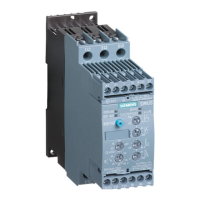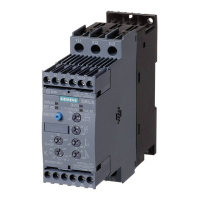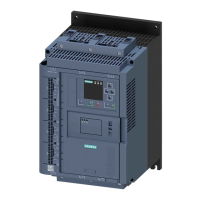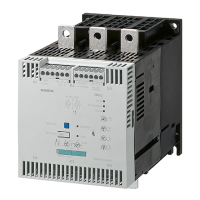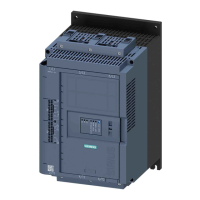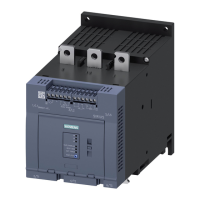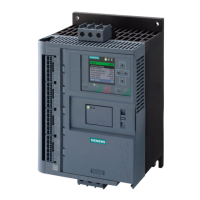Introduction
SIRIUS 3RW44 manual
1-2 GWA 4NEB 535 2195-02 DS 02
1.1 Physical Basics of the 3-phase Asynchronous Motor and Mode
of Operation of the Soft Starter
1.1.1 3-phase Asynchronous Motor
Applications of the 3-
phase asynchronous
motor
Thanks to their robust and simple design and low-maintenance operation,
3-phase asynchronous motors are used in large numbers in commercial
applications, trade and industry.
Problem If switched on directly, the typical current and torque behavior of the 3-phase
asynchronous motor may negatively influence the feeding supply network and
the load machine during start-up.
Starting current 3-phase asynchronous motors have a high direct starting current I
(starting)
.
Depending on the motor version, this current may be 3 times to 15 times the size
of the rated operating current. A typical value is 7 to 8 times the size of the motor
rated current.
Disadvantage This results in the following disadvantage
• Higher load on the electrical supply network. This means that the supply
network must be dimensioned for this higher output during motor start-up.
Fig. 1-1: Typical starting current behavior of a 3-phase asynchronous motor
Start torque The start torque and the stalling torque can usually be assumed to be between
2 and 4 times the rated torque. For the load machine, this means that the
starting and acceleration forces in relation to rated operation result in increased
mechanical load on the machine and the conveyed material.
Disadvantages This results in the following disadvantages
• Higher load on mechanical parts of the machine
• Higher costs because of application wear and maintenance
Motor current
I
Motor speed
n
I
Direct
on-line
starting
I
Nom
n
Nom
4_6_Menü_Startart_Direktstart_Strom.wmf

